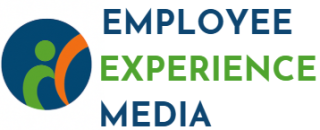
Understanding the Importance of Diversity in the Workplace
Valuing Unique Perspectives
Understanding the importance of diversity in the workplace is crucial in creating an environment where employees feel valued and included. The workplace is a melting pot of different backgrounds, histories, and cultures, each bringing unique perspectives. This rich tapestry not only enhances creativity and innovation but also mirrors the diverse marketplace. Promoting diversity inclusion can enhance problem-solving and decision-making by incorporating a variety of viewpoints.
Cultural Awareness and Respect
Celebrating diversity month provides a dedicated time to raise awareness and recognize the different cultural heritages and contributions within the company. It is a way to show respect and appreciation for the rich cultural background of American heritage, whether it be recognizing black history, women history, or understanding the significance of native American, Hispanic heritage, and other cultural histories. This focus not only boosts morale but also fosters an atmosphere of acceptance and belonging.
Diversity as an Asset
In the United States, where diversity is a significant aspect of society, ensuring this ethos is reflected at the workplace can be beneficial for both employees and the organization. Celebrating awareness months such as pride month or international day helps to highlight the importance of embracing different cultures and perspectives, ultimately helping employees to feel more connected and engaged with their work and the people around them. These observances also provide resources to educate the workforce on cultural differences and promote harmony.
To successfully navigate this undertaking, leadership plays a pivotal role in fostering a culture that prioritizes diversity initiatives. Companies can click here to learn how enhancing inclusion strategies can contribute to this mission. In doing so, leaders can help their teams move past any challenges that may arise in the implementation of these programs, ultimately benefiting employee experience.
How Celebrating Diversity Month Can Enhance Employee Experience
Fostering Inclusion by Celebrating Differences
Diversity Month presents a unique opportunity for organizations to enrich their employee experience by fostering a deeper understanding and appreciation of various cultures and backgrounds. This celebration, nationally recognized in April, constitutes not just a celebration but also an essential day-to-day responsibility for companies aiming to build inclusive work environments. The significance of embracing a multitude of cultures is more prominent than ever, especially in culturally diverse nations like the United States. By celebrating diversity, organizations can enhance their workplace climate and boost morale among employees. Each cultural heritage month, such as Black History Month or Hispanic Heritage Month, serves as a beacon of awareness, inviting companies to engage in activities that celebrate the rich history and contributions of different groups. Aside from celebrating cultural heritage, Diversity Month also paves the way for businesses to combat issues such as workplace bullying and discrimination. By fostering an environment where all voices are heard and welcomed, organizations can tackle these challenges head-on. Implementing comprehensive diversity inclusion strategies can significantly help in creating a harmonious workplace where every employee feels valued. When companies commit to celebrating diversity, they send a powerful message that every employee's background and heritage is valued and respected. This commitment can lead to greater employee satisfaction, increased productivity, and a stronger sense of belonging among staff members. To further understand the intricate role of diversity in enhancing employee experience, exploring the role of a Community and Identity Operations Specialist can offer valuable insights. These specialists focus on creating supportive spaces for employees, celebrating various cultures, and ensuring each individual's identity is recognized and acknowledged. Learn more about this transformative role and its significance in fostering an inclusive culture in the workplace.Practical Ways to Celebrate Diversity Month at Work
Building a Vibrant Workplace Culture Through Celebration
Celebrating diversity month takes many forms, but each activity is rooted in acknowledgment and appreciation. It provides a platform to delve into the rich tapestry of cultures, histories, and identities that contribute to the tapestry of your workplace.- Host Cultural Awareness Events: Plan events that highlight the different heritages present in the workforce. From showcasing traditional dances, music, or storytelling, these experiences help foster understanding and respect among employees.
- Organize Potlucks with a Twist: Encourage employees to bring dishes that represent their cultural background. This not only diversifies the palate but also sparks discussions about traditions and culinary history.
- Leverage Internal Resources: Tap into the diverse knowledge base within the organization. Encourage employees to conduct presentations or workshops about their cultural holidays or customs. This elevates their voices and empowers them as cultural representatives.
- Art and Story Corner: Designate a space for art exhibits or stories from various cultures. This can be an ongoing project, with new stories added throughout the year, enhancing the longevity of diversity month celebrations beyond April.
- Interactive Learning Sessions: Engage external experts to conduct sessions on cultural awareness. Topics could span pride month, black history, women’s history, Native American heritage, and more. Interactive sessions promote vibrant discussions and meaningful learning experiences.
- Launch a 'Diversity Day' Challenge: Initiate a company-wide challenge where teams collaborate to propose innovative diversity inclusion initiatives. This could evolve into a 'stomp bullying' campaign or strategies for celebrating diversity in daily activities.
The Role of Leadership in Fostering an Inclusive Culture
Leadership's Influence on Building an Inclusive Environment
The celebration of Diversity Month offers an opportunity to strengthen the employee experience through cultural awareness. Leaders play a crucial role in this by setting the tone for inclusivity within the organization.
Leadership initiatives to celebrate diversity can help create a supportive environment where employees feel valued and recognized. Leaders should actively participate in diversity initiatives, highlighting the importance of embracing various cultures, whether it's Black History Month or Hispanic Heritage Month, ensuring everyone feels seen and heard.
Moreover, effective leadership encourages open communication, allowing employees to express their unique perspectives and cultural backgrounds. By doing this, leaders not only promote diversity but also foster innovation, as diverse teams bring a multitude of ideas and solutions to the table.
Providing resources for diversity training is another way leaders can make an impactful contribution. Training workshops or seminars can increase awareness about cultural differences and help dismantle stereotypes, consequently improving interpersonal relationships among employees.
It is essential for leaders to consistently demonstrate their commitment to diversity inclusion. By taking an ongoing, active role, they inspire employees to participate in celebrations of heritage months and awareness days, such as Women History Month, Independence Day, or National Day. This ongoing engagement encourages a sense of unity and belonging, improving the overall employee experience year-round.
Leaders who effectively embody and promote a culture of inclusion contribute to a workplace where everyone feels a part of a collective heritage, united under shared values despite diverse backgrounds. This unity is the foundation upon which a robust, employee-centric culture can be built, ensuring long-term organizational success.
Measuring the Impact of Diversity Initiatives on Employee Experience
Evaluating the Success of Diversity Initiatives
Measuring the impact of diversity initiatives on employee experience is crucial in understanding their effectiveness and areas for improvement. These observations can guide future efforts to allow every employee to feel seen and acknowledged. Here are some ways to assess the impact:- Employee Surveys: Conduct regular surveys to gauge employee sentiment and how they perceive the inclusion of different cultures, such as during Diversity Month or Awareness Month celebrations. Surveys should include questions about the general work environment, inclusion practices, and their participation in cultural events like Black History Month or Hispanic Heritage Month.
- Participation Rates: Analyze attendance and participation rates in diversity-related activities. Are employees engaging more during these specific months, such as National Day or Pride Month? High participation rates often indicate that the events resonate well with the staff.
- Employee Retention Rates: Compare retention rates before and after implementing diversity programs. Programs that genuinely support an inclusive culture often witness lower turnover as they foster a sense of community and belonging among employees.
- Feedback Mechanisms: Implement channels for continuous communication where employees can provide real-time feedback on diversity initiatives. This helps organizations adapt quickly and demonstrate responsiveness to employee needs.
- Performance Metrics: Examine any correlation between diversity inclusion efforts and overall company performance. Diverse teams often contribute to innovative solutions and cultural awareness, thereby enhancing overall productivity.













